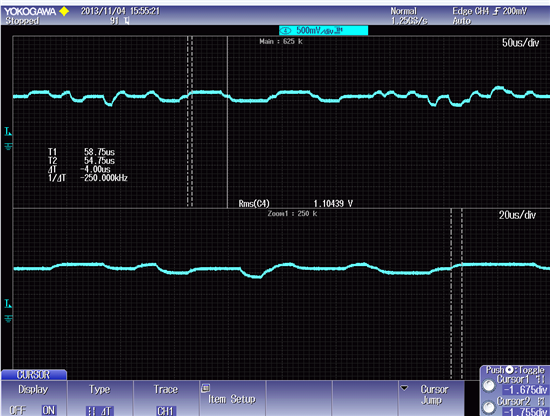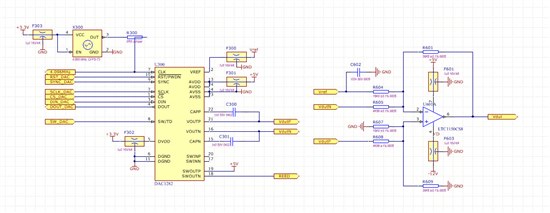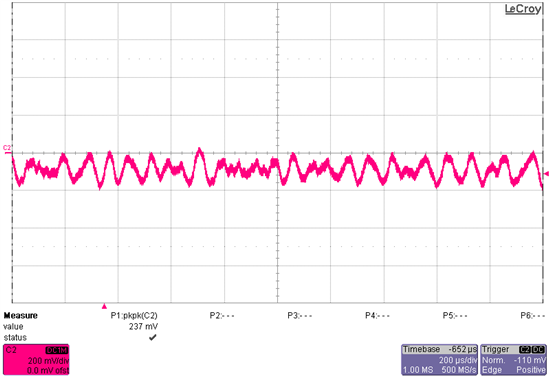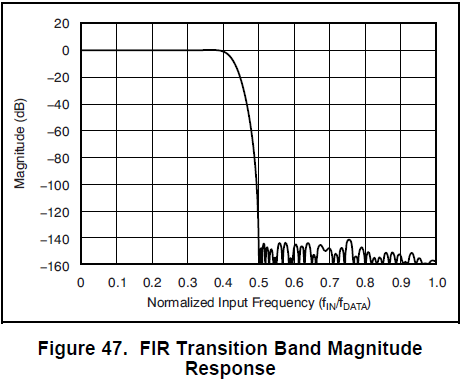The output of the DAC1282 contains some pulse noise with frequency 256 kHz with amplitude of ~500mVp-p.
When the IC is power on there is no pulse noise, just a small sine wave which is logic due to the default settings. When initiating the DAC by writing hex 01 to register 0 the noise starts. Then the noise contains no matter what mode we commanding it to. The screen shot below is showing the output signal for the DAC when commanding it to DC mode with 1.1V output signal, full range output (no damping).
The DAC is connected to a difference amplifier and loaded with 5kOhm. The 1nF filter described in the datasheet is connected.
I feel like is it a quite simple error but I can't find it. Does someone have a solution for it?
/David





